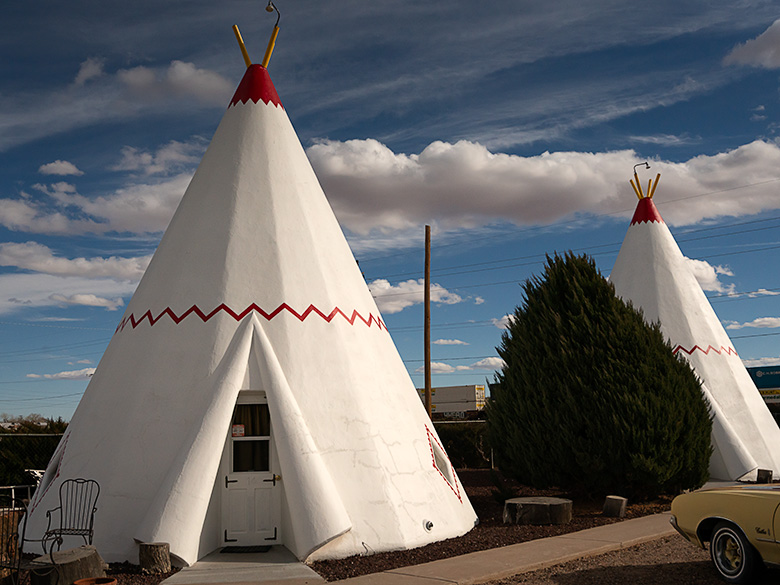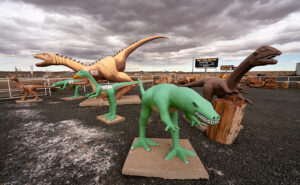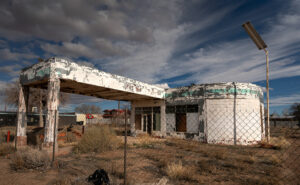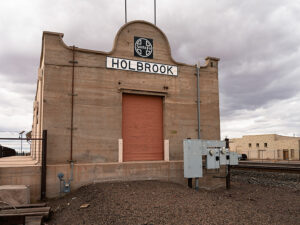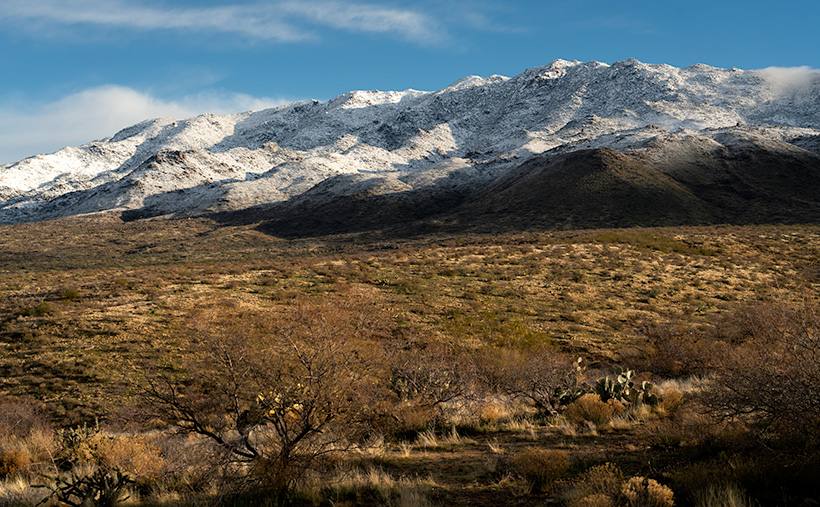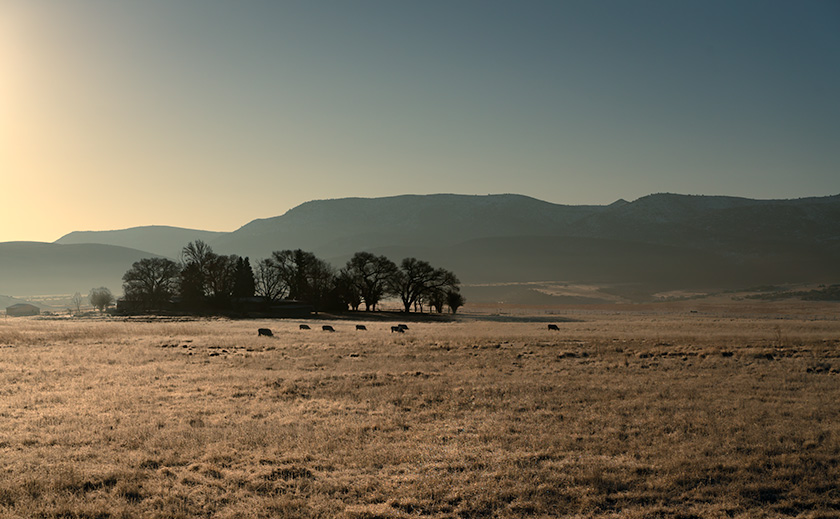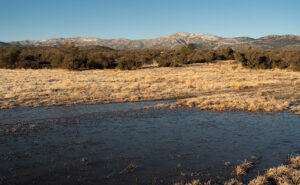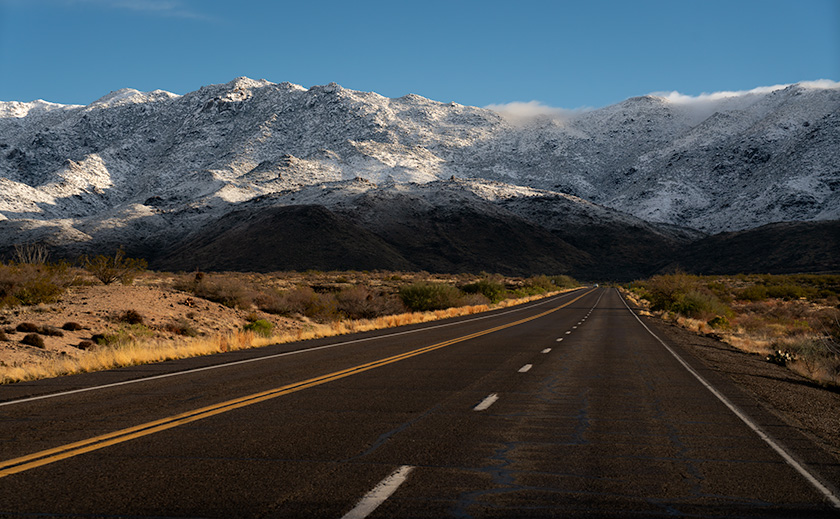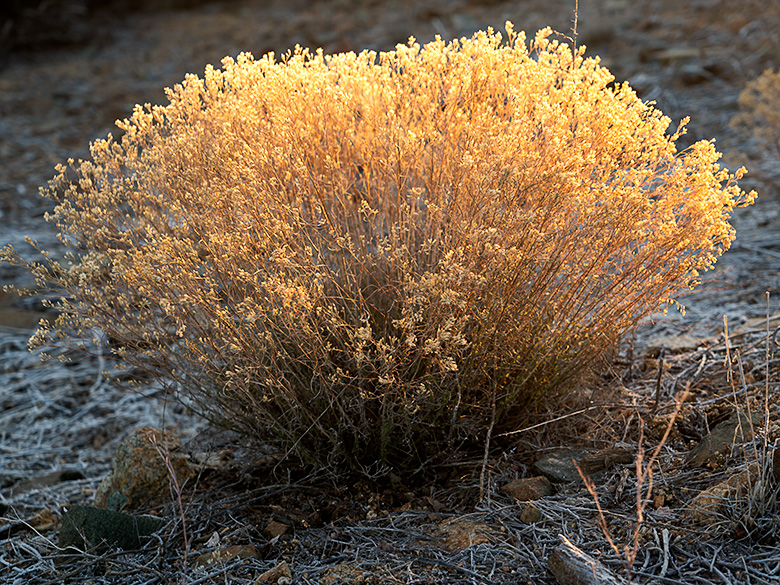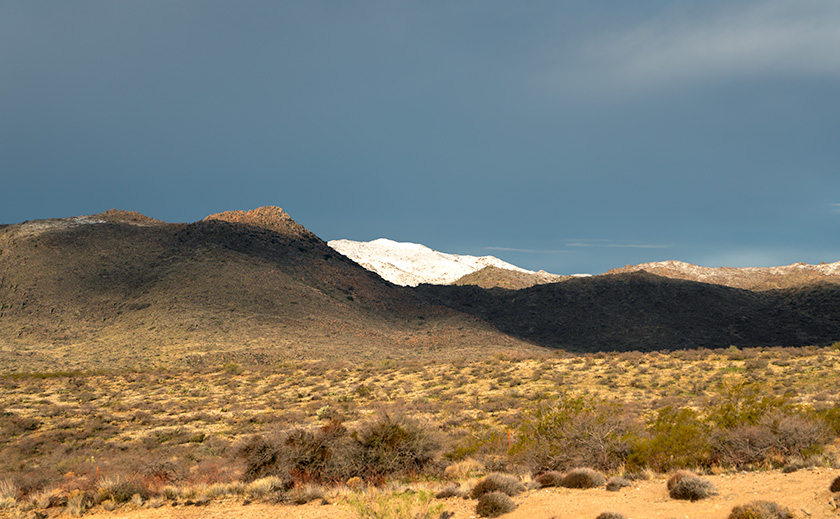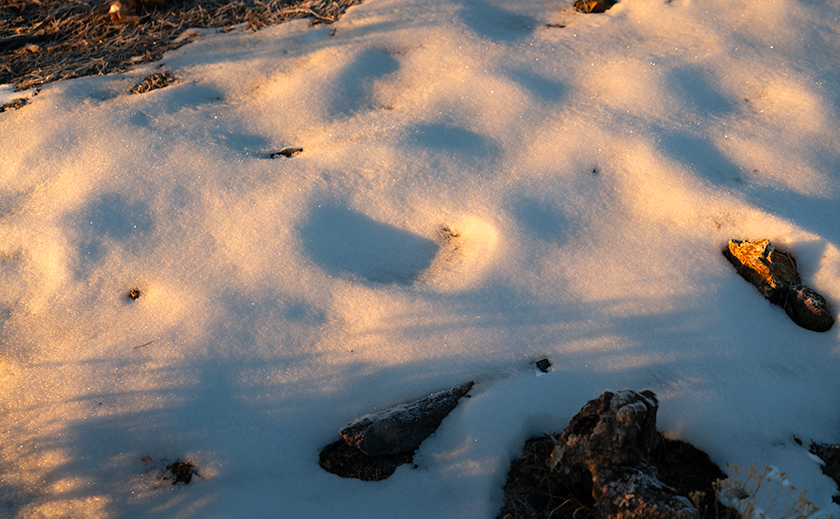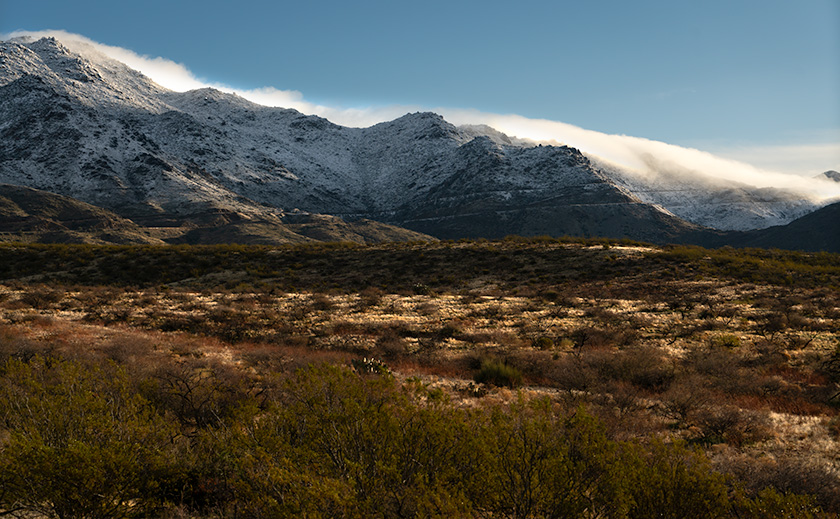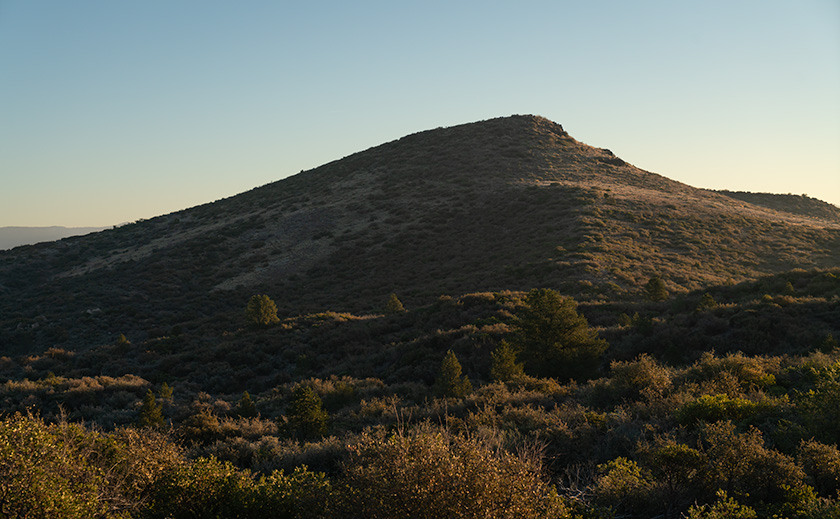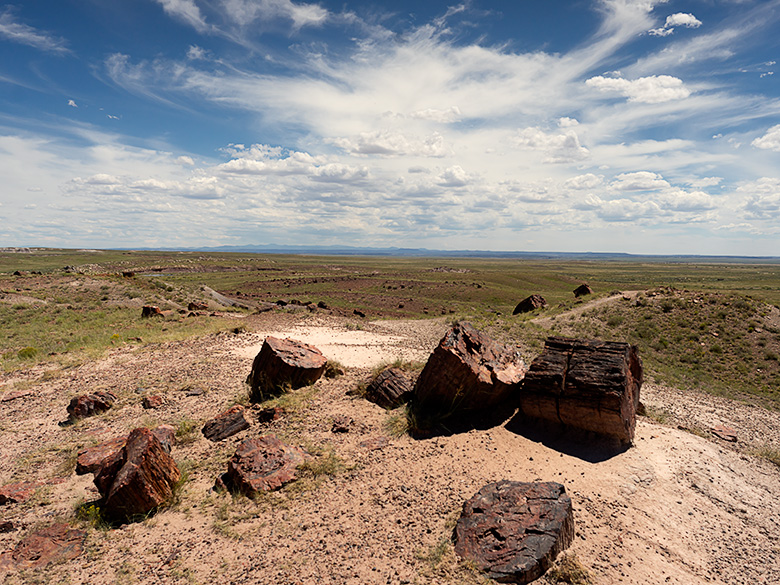
In the darkness of a new moon night, as the planets aligned in an alphabetical parade across the sky, a mysterious vortex reveals itself on the Petrified Forest’s Blue Mesa. During our March visit, this phenomenon descended upon the desert so abruptly that even the coyotes ceased their howlings and sought refuge. Emitting a strange, bluish light that paradoxically cast no shadows, the vortex resembled a serene tornado devoid of wind or dust.
Queen Anne implored me to remain safely in the truck, but driven by an irrepressible curiosity—and a touch of male recklessness—I approached the enigmatic glow. To my astonishment, the light seemed to emanate from an infinitely deep shaft that absorbed all light, a celestial anomaly that didn’t just block but swallowed the stars behind it, much like a black hole. The sheer impossibility of its physics beckoned me closer yet filled me with an instinctual dread.
Retreating momentarily, I fetched a new tee shirt from our recent gift shop visit, wadded it into a makeshift projectile, and lobbed it at the spectral phenomenon. On contact, the light flared like a campfire doused in brandy, the tee shirt evaporating into a blaze of unknown physics, replaced by a window into another era. What lay before me was alien and familiar—the same lands but from an unfathomably distant past.
As I peered through the temporal aperture, the vivid contrast between past and present became strikingly clear. Below me, the landscape stretched out at a significantly lower elevation, nowhere near the mile-high expanse of the contemporary Colorado Plateau. The sun blazed directly overhead, its position a stark reminder of our proximity to the equator in this ancient era. This verdant vista was a sharp departure from the blue-gray dust bowl that surrounded me in my own time. Volcanoes loomed in the distance, their eruptions feeding a robust river that sustained expansive forests of towering Norfolk Island Pines along its banks. The trees, resembling those I had seen in the South Pacific, rose majestically above broad meadows draped with lush ferns.
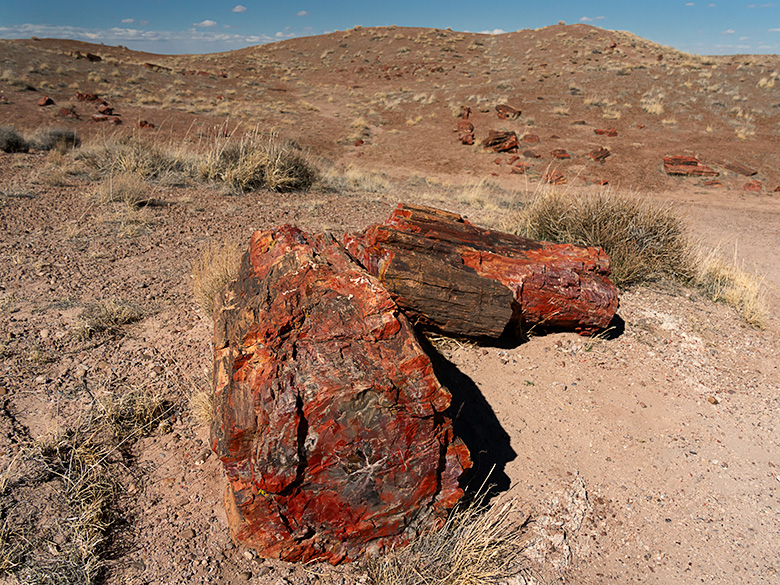
A sense of awe welled inside me as I realized I was witnessing the Triassic Period, gazing upon the supercontinent of Pangaea during the dawn of the dinosaurs. I was observing the initial deposition of what would become the Chinle Formation. I recalled from my readings that this geological stratum could reach staggering thicknesses of up to 1,000 feet in some areas, comprising mud, volcanic ash, and silt layers. Each layer, uniquely colored by the minerals brought by successive floods, painted a vivid rainbow across the landscape. This explains today’s mesmerizing array of colors in the petrified logs and strata. These layers were like pages in a book, each telling a story of ancient environmental changes and cataclysmic events that shaped this prehistoric world.
I wanted Anne to witness this extraordinary spectacle, so I glanced at the truck, hoping to catch her eye. However, Anne was deeply ensconced in her usual road trip posture: head wedged comfortably between the headrest and the door window, eyes closed, with a gentle series of snores that rhythmically fogged the glass. Outside, the coyotes, usually the desert’s nocturnal soundtrack, had retreated into a tense silence, perhaps unnerved by the vortex’s eerie presence. Anne’s sporadic snoring crescendoed to fill the void in their absence, unwittingly providing a somewhat incongruous lullaby for the mystical night.
Every so often, her snoring reached such a volume that it startled her awake, causing a brief moment of confused blinking before she settled back into her dreams, her snores resuming their irregular serenade. It seemed even the peculiar happenings of the universe couldn’t rouse her as effectively as her resonant outbursts.
As I turned my gaze back to the mystical landscape before me, movement along the tree line caught my attention. A herd of dinosaurs grazed contentedly on the lush ferns, presenting a sight as bizarre as it was fascinating. Standing about as tall as me at their shoulders, these creatures appeared as if someone had whimsically grafted a walrus’s head onto a hippo’s body—only, the resemblance ended there. Unlike the smooth, blubbery skin of a hippo, these dinosaurs were decked out in what looked like nature’s version of leather armor, tough and textured, designed for the rough-and-tumble lifestyle of the Triassic.
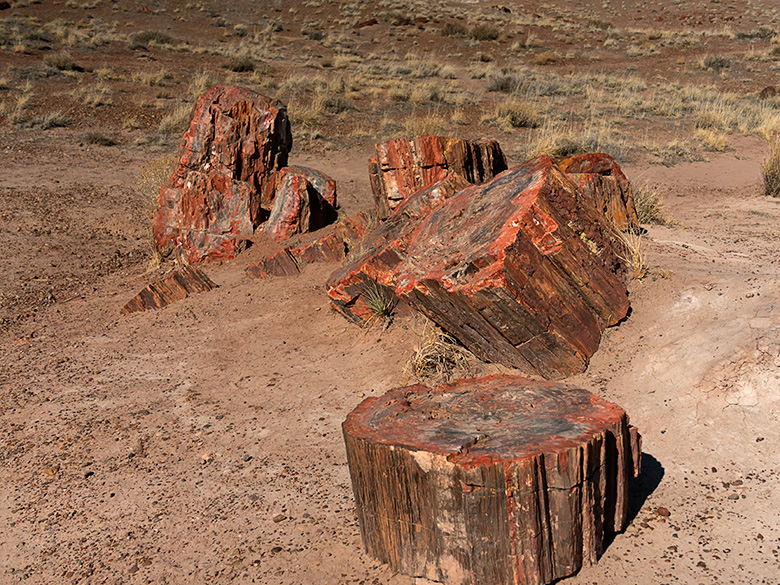
Their grunts and murmurs filled the air, a primitive yet oddly harmonious symphony. They kept close contact, communicating in low rumbles that resonated through the ground, much like whales in an ocean vast with silence. Upon consulting my trusty Wikipedia back home, I confirmed these bizarre beasts were Placerias, herbivores of the Triassic who seemed to have missed the memo on needing fat ripples for insulation. Their skin, devoid of flabby undulations, clung to their frames, armored against predators and perhaps the occasional bad weather day.
Watching them, I couldn’t help but marvel at their comical appearance—imagine a group of dignitaries dressed in bulky, ill-fitting leather armor attending a gala where the dress code was strictly ‘prehistoric chic.’ Their grave, tusky faces and the earnest way they munched on ferns added an air of solemnity to their otherwise ludicrous ensemble.
As I continued observing this prehistoric tableau, I was drawn to another pair of Placerias further out in the meadow, engaged in a rather comical sport. These two weren’t simply grazing like their peers; instead, they were energetically flinging an orange Frisbee back and forth with surprising dexterity. Unlike dogs who catch with their mouths, these ancient athletes used their tusks to scoop the disk, then launched it with a practiced snap of their heads, turning a simple game into a spectacle of prehistoric lacrosse.
To my astonishment, one of them sported a familiar-looking tee shirt, now a makeshift jersey. Squinting for a better view, I couldn’t help but exclaim, “Hey, that’s my tee shirt!” Objects, too, could travel through time via the vortex. As I watched, they skillfully navigated their game of ‘Shirts and Skins,’ the tee shirt serving as a team uniform in this bizarre version of Jurassic Sports.
Their game was a peculiar sight—half-fetch, half-soccer, with all the earnestness of Olympic competitors. It was a scene of sporting prowess that would have baffled even the most imaginative sports commentator. Amid my amusement and disbelief, a part of me couldn’t help but feel a touch envious of their uninhibited joy—a stark contrast to my usual self-deprecation and haplessness, which at that moment seemed confined to the sidelines of time.
I dubbed the one sporting my shirt “Gonzo” for his daring antics, and the other I named “Norm” after his uncanny resemblance to the beloved barfly from Cheers with his leisurely demeanor and stout build. As Gonzo and Norm chased the Frisbee across the meadow, their surprising agility belied their substantial physiques; their scaly, armored skin showcased the muscle tone of seasoned athletes rather than any signs of bulk slowing them down. They weren’t the brightest crayons in the box, though. Their antics were a series of comedic missteps—tripping over their feet, tumbling in clumsy somersaults, wholly absorbed in their game.
Despite their athletic pursuits, they remained blissfully unaware of the brewing storm. Dark clouds rolled over the distant mountains, and thunder rumbled ominously, yet Gonzo and Norm continued their game undeterred. It was a stark reminder of their simple minds, focused solely on the moment’s joy, oblivious to the growing threat that gathered with each passing minute.
Even though this ancient land was far from the desert I call home, it shared one familiar trait: the occurrence of seasonal monsoons. The storms I observed gathered ferocity over the volcanic mountains, mirroring the summer storms of my own time. These prehistoric storms unleashed torrential flash floods that brought more rain in an hour than we see all year, transforming the tranquil scene into a landscape of chaos.
As I watched, a formidable wall of dark gray water mixed with ash and debris surged over the land. It moved with the relentless force of cement pouring from a mixer’s chute, snapping ancient trees as if they were mere twigs and sweeping them up in its muddy grasp. The deluge roared across the plains, an unstoppable force of nature.
The monstrous wave of mud and debris bore down on them, and Gonzo and Norm finally noticed the danger. There was a brief, comical attempt to outrun the flood—Norm’s legs churning comically fast, Gonzo awkwardly trying to scoop up the Frisbee with his tusks for one last throw. Perhaps they understood, in their simple way, that this was the end, but they faced it as they had lived: together, amid their favorite game. Their final squeals, a mixture of surprise and protest, were quickly silenced by the relentless flood as if the land wished to spare them any prolonged fear.
The spectacle I had witnessed was poignant, akin to losing friends in a sudden natural disaster, yet enlightening. It revealed how the distinctive popcorn-textured strata of the Chinle Formation were laid down and how the ancient trees and flora were interred within it. As the vortex gradually dimmed and vanished into the encroaching darkness of the night, I could hear coyotes yelping in the distance, perhaps sharing tales of the strange light show with their kin.
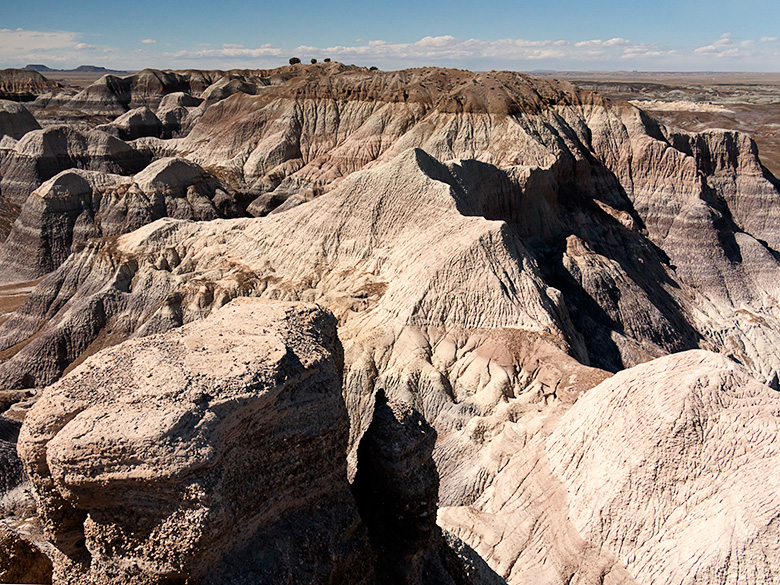
Lost in my reflections, I strolled back to the truck and gently nudged Anne awake. “Hey, ready to go back to the motel and get some sleep?” I asked, the irony not lost on me that I was interrupting her sleep to suggest we sleep. Her only response was a sleepy nod, barely comprehending the night’s extraordinary events.
Before leaving the Holbrook area the following day, we stopped at the park’s gift shop, hoping to replace the shirt I had lost to the vortex. I scanned the racks for something similar but found nothing. Seeing my frustration, the sales lady mentioned, “That style sold out yesterday, but a ranger brought in one just like it. Found it at a dig site, believe it or not. It’s in the lost and found. Would you like to see it?”
Curious, I nodded, and she fetched a bin from behind the counter. Inside was a stretched, soil-crusted shirt—remarkably similar to mine- with tags. My heart skipped a beat as I lifted it, revealing a beat-up orange Frisbee nestled underneath, riddled with puncture marks. “Looks like mine, alright,” I murmured, a chill running down my spine as the pieces of an impossible puzzle fell into place.
As Gonzo’s and Norm’s tale whimsically illustrates, the Petrified Forest National Park is not merely a portal to the past but a vibrant laboratory of ongoing discovery. Here, every visitor has the chance to tread amid echoes from millions of years ago, exploring the geological marvels of the Triassic period. Whether you’re an aspiring paleontologist, a lover of natural beauty, or a seeker of time-bound adventures, the Petrified Forest awaits to unfold its rich tapestry of tales. Plan your visit, and you might uncover a hidden chapter of Earth’s history, where the past and the present merge in the whispers of the stones.
Thank you for joining me on this incredible journey through Petrified Forest National Park. Suppose you’ve enjoyed this tale of prehistoric whimsy and modern-day mystery. In that case, I invite you to explore larger versions of this month’s images on my New Work portfolio and the detailed pieces I’ve posted on Fine Art America. These photos will be displayed there for three months before being rotated.
As the echoes of the ancient past slowly fade, let’s turn our gaze to a different historical exploration. Next month, join me for a night among the neon and nostalgia of Gallup’s abandoned motels. We’ll explore the haunting beauty of old motel signs, capturing the stories they whisper to the desert winds. Don’t miss this eerie yet visually captivating journey—subscribe now to get a reminder as soon as we go live.
Until then, keep exploring the layers of history around you, and perhaps you’ll discover your own story woven into the fabric of time.
jw

